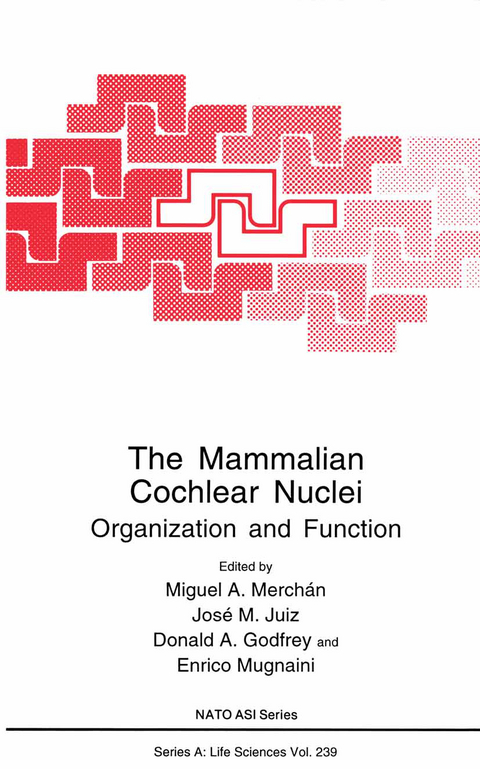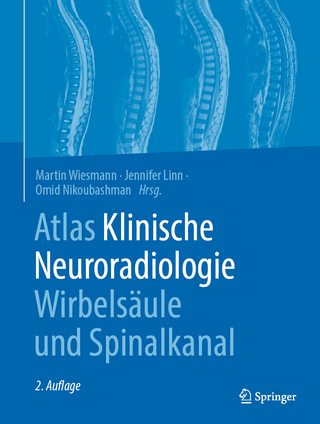
The Mammalian Cochlear Nuclei
Springer-Verlag New York Inc.
978-1-4613-6273-9 (ISBN)
The cellular basis for signal processing in the mammalian cochlear nuclei.- I. Developmental Issues.- Cell birth, formation of efferent connections, and establishment of tonotopic order in the rat cochlear nucleus.- Postnatal development of auditory nerve projections to the cochlear nucleus in Monodelphis Domestica.- II. Primary Inputs.- Anatomical and physiological studies of type I and type II spiral ganglion neurons.- Topographic organization of inner hair cell synapses and cochlear spiral ganglion projections to the ventral cochlear nucleus.- Ultrastructural analysis of synaptic endings of auditory nerve fibers in cats: correlations with spontaneous discharge rate.- III. Intrinsic Connections.- Intrinsic connections in the cochlear nuclear complex studied in vitro and in vivo.- The synaptic organization of the ventral cochlear nucleus of the cat: the peripheral cap of small cells.- Alterations in the dorsal cochlear nucleus of cerebellar mutant mice.- IV. Descending Projections.- Non-cochlear projections to the ventral cochlear nucleus: are they mainly inhibitory?.- Non-primary inputs to the cochlear nucleus visualized using immunocytochemistry.- Superior olivary cells with descending projections to the cochlear nucleus.- Descending projections from the inferior colliculus to the cochlear nuclei in mammals.- V.- Neurotransmitters of the Cochlear Nucleus.- Localizing putative excitatory endings in the cochlear nucleus by quantitative immunocytochemistry.- Excitatory amino acid receptors in the rat cochlear nucleus.- Glycine and GABA: transmitter candidates of projections descending to the cochlear nucleus.- Inhibitory amino acid synapses and pathways in the ventral cochlear nucleus.- Glycinergic inhibition in the cochlear nuclei: evidence for tuberculoventral neuronsbeing glycinergic.- GABA and glycine inputs control discharge rate within the excitatory response area of primary-like and phase-locked AVCN neurons.- Neuropharmacological and neurophysiological dissection of inhibition in the mammalian dorsal cochlear nucleus.- Comparison of quantitative and immunohistochemistry for choline acetyltransferase in the rat cochlear nucleus.- Choline acetyltransferase in the rat cochlear nuclei: immunolocalization with a monoclonal antibody.- VI. Projections and Response Properties of Cochlear Nucleus Neurons.- The cochlear root neurons in the rat, mouse and gerbil.- Projections of cochlear nucleus to superior olivary complex in an echolocating bat: relation to function.- The monaural nuclei of the lateral lemniscus: parallel pathways from cochlear nucleus to midbrain.- Ascending projections from the cochlear nucleus to the inferior colliculus and their interactions with projections from the superior olivary complex.- Responses of cochlear nucleus cells and projections of their axons.- Physiology of the dorsal cochlear nucleus molecular layer.- Coding of the fundamental frequency of voiced speech sounds and harmonic complexes in the cochlear nerve and ventral cochlear nucleus.- VII. Computer Modelling of the Cochlear Nucleus.- Computer modelling of the cochlear nucleus.- Regularity of discharge constrains models of ventral cochlear nucleus bushy cells.- Cross-correlation analysis and phase-locking in a model of the ventral cochlear nucleus stellate cell.- VIII. Appendix: Cochlear Nucleus Prostheses.- The development and evaluation of cochlear nucleus prostheses.- IX. Special Contributions in Honour of R. Lorente de Nó.- Lorente de Nó’s scientific life.- Sensoritopic and topologic organization of the vestibular nerve.- Lorente de Nóand the hippocampus: Neural modeling in the 1930s.- The rat entorhinal cortex. Limited cortical input, extended cortical output.- Axonal patterns of interneurons in the cerebral cortex: in memory of Rafael Lorente de Nó.- Glomérulos, barrels, columns and maps in cortex: an homage to Dr. Rafael Lorente de Nó.- Lorente de Nó: the electrophysiological experiments of the latter years.
| Reihe/Serie | Nato Science Series: A ; 239 |
|---|---|
| Zusatzinfo | 532 p. |
| Verlagsort | New York, NY |
| Sprache | englisch |
| Maße | 178 x 254 mm |
| Themenwelt | Medizinische Fachgebiete ► Chirurgie ► Neurochirurgie |
| Medizin / Pharmazie ► Medizinische Fachgebiete ► Neurologie | |
| Naturwissenschaften ► Biologie ► Humanbiologie | |
| Naturwissenschaften ► Biologie ► Zoologie | |
| ISBN-10 | 1-4613-6273-3 / 1461362733 |
| ISBN-13 | 978-1-4613-6273-9 / 9781461362739 |
| Zustand | Neuware |
| Informationen gemäß Produktsicherheitsverordnung (GPSR) | |
| Haben Sie eine Frage zum Produkt? |
aus dem Bereich


